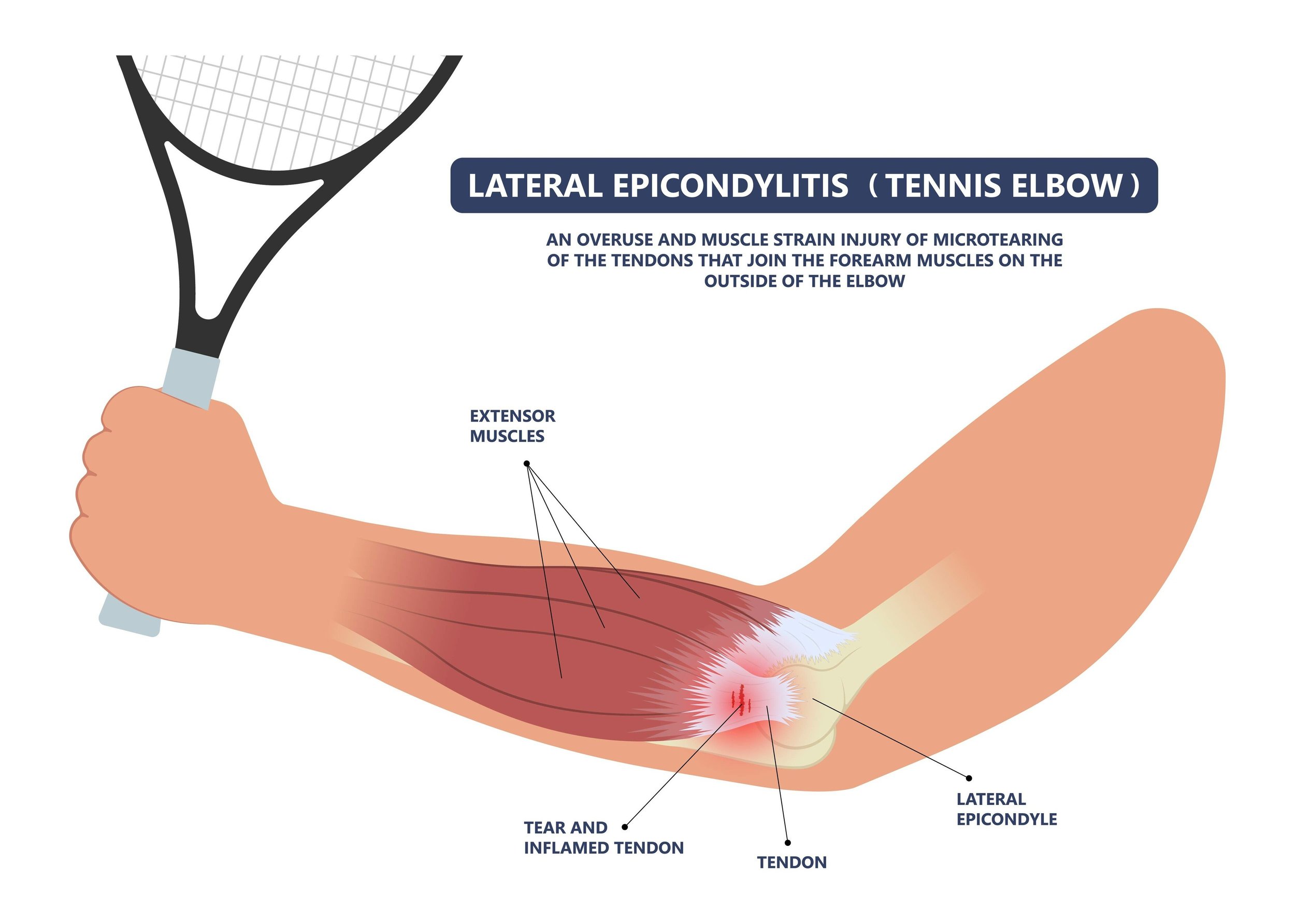Understanding Tennis Elbow: Causes, Treatment, and Prevention with Osteopathy in Manchester
Tennis elbow is a common condition among athletes and non-athletes alike, and results in pain that affects the tendons in the elbow. While its name suggests a connection to tennis, it can affect anyone who performs repetitive arm motions. In this comprehensive guide, we'll delve into what tennis elbow is, its causes, risk factors, how osteopathy can help alleviate symptoms, and effective prevention strategies, with a focus on Manchester residents.
What is Tennis Elbow?
Clinically known as lateral epicondylitis, tennis elbow is a condition characterised by pain and tenderness on the outer part of the elbow. Specifically, it is an overuse injury that occurs secondary to an eccentric overload of the common extensor tendon at the origin of the extensor carpi radialis brevis (ECRB) tendon. Repetitive motion and overuse of the forearm muscles, can lead to inflammation or microtears in the tendons that attach to the lateral epicondyle, the bony bump on the outside of the elbow.
Causes of Tennis Elbow:
The primary cause of tennis elbow is repetitive stress on the tendons and muscles of the forearm. Activities involving gripping, twisting, or lifting can contribute to its development. Common culprits include tennis, hence the name, but also activities such as DIY, gardening, painting, typing, and even playing musical instruments. Overuse or sudden increases in intensity or duration of these activities can lead to the onset of tennis elbow.
Several factors can increase the risk of developing tennis elbow. These include:
Age: Individuals between the ages of 30 and 50 are more prone to developing tennis elbow.
Occupation: People with occupations that involve repetitive arm movements or gripping, such as plumbers, painters, and carpenters, are at higher risk.
Sports: Athletes participating in sports that require repetitive arm motions, such as tennis, golf, and racquetball, are susceptible.
Technique: Poor technique or improper equipment use during sports or activities can contribute to the development of tennis elbow.
Previous Injury: A history of previous elbow or forearm injury increases the likelihood of developing tennis elbow.
How Osteopathy Can Help:
Holland Osteopathy offers a holistic approach to treating tennis elbow, focusing on not just the symptoms but the cause of pain. Treatment aims to reduce pain, improve range of motion, and promote healing without the need for invasive procedures or medication. Based in south Manchester, we can offer the following techniques to help ease your symptoms.
Soft Tissue Manipulation: Osteopaths use gentle hands-on techniques to release tension in the muscles and fascia surrounding the elbow, reducing pain and inflammation.
Joint Mobilisation: Gentle mobilisation techniques are employed to restore normal joint function and alleviate stiffness in the elbow and surrounding joints.
Acupuncture/Dry Needling: Dry needling can help with tennis elbow by improving blood flow to the tendon, which is vital for healing, reducing pain, and allowing for greater function in the elbow joint.
Exercise Prescription: We will prescribe specific strengthening exercises to improve the tolerance of the injured tissue, and endurance of the forearm muscles, promoting long-term recovery and preventing recurrence.
Posture & Ergonomic Advice: We can provide guidance on proper ergonomics and posture during daily activities and sports to minimise strain on the elbow and prevent further injury.
Patient Education: This is the most important aspect of any treatment. Osteopaths, as well as Physios and Chiros can provide the best treatment in the world, but if patients continue doing everything that aggravates their symptoms it can all be for nothing. That’s why it is important that we educate patients about their condition, its causes, and how to manage and prevent future episodes of sciatica. Avoidance of aggravating factors is vital!!!
Preventing Tennis Elbow:
Prevention is key to avoiding the onset or recurrence of tennis elbow. Here are some tips to help prevent tennis elbow, especially for residents of Manchester:
Warm-up and Stretch: Before engaging in any physical activity, warm up properly and perform stretching exercises to prepare the muscles and tendons for movement.
Strength training: Isometric muscle contractions are great for rehabilitating a tendon injury, but overall strength training can improve the tolerance of tissues to repetitive loads.
Technique and Equipment: Maintain proper technique and use appropriate equipment during sports and activities to avoid excessive strain on the elbow.
Gradual Progression: Gradually increase the intensity, duration, and frequency of activities to allow the muscles and tendons to adapt without overloading them.
Rest and Recovery: Allow adequate time for rest and recovery between activities to prevent overuse injuries and promote tissue repair.
Whilst tennis elbow can impact people of varied ages and lifestyles, with the right diagnosis and treatment, individuals can find relief and get back to pain free living. If you, or someone you know, is suffering from tennis elbow, get in touch with us at Holland Osteopathy, to explore the best course of action for your specific situation.

